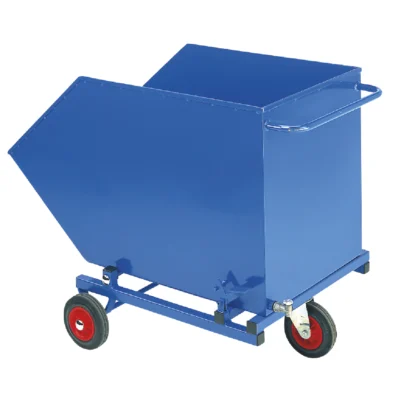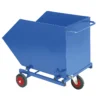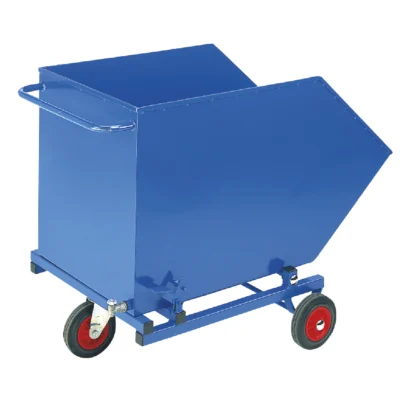-




Tilting Skip Bin | 400kg
From £796.78 Ex. VATStreamline waste handling with the Loadtek Tilting Skip Bin — a British‑made, heavy‑duty steel bin with a 400kg/260L capacity, reinforced…
Select options This product has multiple variants. The options may be chosen on the product page -




Tilting Skip Bin | 200kg
From £730.54 Ex. VATTidy up fast with the Loadtek Tilting Skip Bin — a British‑made, heavy‑duty steel bin with a 200kg/200L capacity, reinforced…
Select options This product has multiple variants. The options may be chosen on the product page
Industrial skips are indispensable tools in workplaces such as manufacturing facilities and warehouses, where large volumes of waste and materials need to be managed efficiently. Tilting bin skips and forklift-attached skips are two common types of industrial skips used for waste collection, transportation, and disposal. Tilting bin skips, also known as tipper bins or tipping skips, are designed with a hinged base that allows them to be easily tipped and emptied using a tipping mechanism. These skips are ideal for collecting and transporting bulky or heavy waste materials such as metal shavings, construction debris, or production scrap. Forklift-attached skips, on the other hand, are equipped with fork pockets or lifting lugs that allow them to be securely attached to the forks of a forklift for transportation around the facility.
Industrial skips play a crucial role in maintaining cleanliness, organization, and safety in manufacturing and warehousing environments. By providing designated collection points for waste and materials, skips help prevent clutter, tripping hazards, and obstruction of work areas. Additionally, skips enable efficient waste segregation, allowing different types of waste to be separated and disposed of properly, in accordance with regulatory requirements. Forklift-attached skips enhance operational efficiency by facilitating the quick and easy movement of materials and waste throughout the facility, reducing manual handling and minimizing the risk of injuries.

